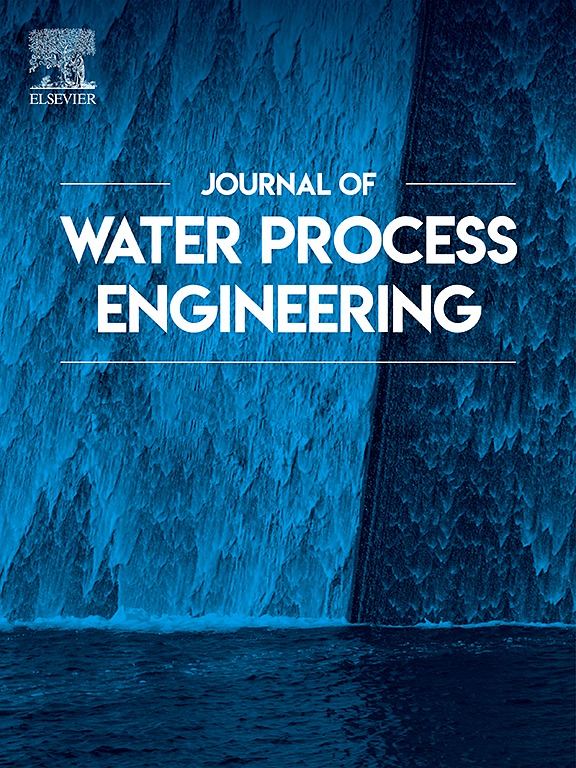Facile fabrication of PAN/PAMAM@UiO-66-NH2 composite nanofiber membranes for enhanced Pb2+ adsorption
IF 6.3
2区 工程技术
Q1 ENGINEERING, CHEMICAL
引用次数: 0
Abstract
Metal organic framework compounds (MOFs) are increasingly considered as the future direction for heavy metal adsorption, but nanoscale MOFs are difficult to separate and recover during the adsorption process, which requires finding a carrier to fix the MOFs materials. In this paper, we demonstrated electrospinning technology to prepare PAN/PAMAM@UiO-66-NH2 composite nanofiber membrane with high adsorption selectivity by loading PAMAM@UiO-66-NH2 powder into polyacrylonitrile (PAN) nanofiber membrane. Under the condition of pH 5, the composite nanofiber membrane with a loading capacity of 15 % PAMAM@UiO-66-NH2 exhibited the best adsorption effect for lead ions (Pb2+), with a maximum adsorption capacity of 203.4 mg/g. The results of adsorption kinetics research indicated that the adsorption behavior of Pb2+ on PAN/PAMAM@UiO-66-NH2 composite nanofiber membrane tend to be endothermic chemical adsorption, which may be related to the coordination chelation of amino groups. Therefore, PAN/PAMAM@UiO-66-NH2 composite nanofiber membranes still exhibited good selective adsorption of Pb2+ in the presence of other metal ions, such as Cu2+, Zn2+, Mg2+, Ni2+ and Cd2+. In addition, the prepared PAN/PAMAM@UiO-66-NH2 composite nanofiber membrane exhibited good recycling performance, making it an excellent candidate for heavy metal ion adsorbents in water treatment applications.

求助全文
约1分钟内获得全文
求助全文
来源期刊

Journal of water process engineering
Biochemistry, Genetics and Molecular Biology-Biotechnology
CiteScore
10.70
自引率
8.60%
发文量
846
审稿时长
24 days
期刊介绍:
The Journal of Water Process Engineering aims to publish refereed, high-quality research papers with significant novelty and impact in all areas of the engineering of water and wastewater processing . Papers on advanced and novel treatment processes and technologies are particularly welcome. The Journal considers papers in areas such as nanotechnology and biotechnology applications in water, novel oxidation and separation processes, membrane processes (except those for desalination) , catalytic processes for the removal of water contaminants, sustainable processes, water reuse and recycling, water use and wastewater minimization, integrated/hybrid technology, process modeling of water treatment and novel treatment processes. Submissions on the subject of adsorbents, including standard measurements of adsorption kinetics and equilibrium will only be considered if there is a genuine case for novelty and contribution, for example highly novel, sustainable adsorbents and their use: papers on activated carbon-type materials derived from natural matter, or surfactant-modified clays and related minerals, would not fulfil this criterion. The Journal particularly welcomes contributions involving environmentally, economically and socially sustainable technology for water treatment, including those which are energy-efficient, with minimal or no chemical consumption, and capable of water recycling and reuse that minimizes the direct disposal of wastewater to the aquatic environment. Papers that describe novel ideas for solving issues related to water quality and availability are also welcome, as are those that show the transfer of techniques from other disciplines. The Journal will consider papers dealing with processes for various water matrices including drinking water (except desalination), domestic, urban and industrial wastewaters, in addition to their residues. It is expected that the journal will be of particular relevance to chemical and process engineers working in the field. The Journal welcomes Full Text papers, Short Communications, State-of-the-Art Reviews and Letters to Editors and Case Studies
 求助内容:
求助内容: 应助结果提醒方式:
应助结果提醒方式:


